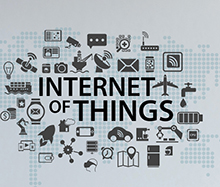 With the talk of IoT booming across almost every industry and the number of connected products exploding towards mindboggling numbers, IoT has become a major economic force. A force that is predicted to grow at an increasing rate during the next decade.
With the talk of IoT booming across almost every industry and the number of connected products exploding towards mindboggling numbers, IoT has become a major economic force. A force that is predicted to grow at an increasing rate during the next decade.
While IoT mainly provides the possibility to connect products, by collecting and exchanging data, it is the use and application of that data and the new business opportunities that come with it that make IoT so important for companies and consumers alike. There is a wealth of insightful information that can be generated from the right data, and that is where the challenge lies.
The business opportunities that IoT provides need to be considered and reflected in a company’s strategy, which requires the exposure of IoT to executives and staff across all functions of a company and its extended enterprise partners. An IoT enabled business strategy requires smart connected products, and these products require PLM to manage their through-life definition. Consequently, IoT requires PLM for full IoT strategy enablement, thus bringing PLM into the executive office.
The process of defining, analyzing, and monitoring a successful IoT enabled business strategy, comes with the need for product and portfolio related executive PLM capabilities. These executive PLM capabilities will require the ability to combine information from different sources with PLM managed data. These sources include ERP, SCM, CRM, MES, LIMS, and others, as well as the ability to simulate and optimize several business scenarios. PLM solutions that implement the enterprise innovation platform concept are best positioned to adapt to this expansion into the executive office.
While some of the PLM solution providers appear to be well positioned to provide the necessary support, for others this will certainly be a challenge. That challenge only becomes greater when one considers that for most small- and mid-sized companies, IoT is no more than a buzz word that they don’t have the know-how nor the means to address. However, as the OEM’s become more IoT enabled, they will be forced to work IoT into their portfolios and strategies as well, and thereby will require adequate education, guidance, and support, with PLM at the foundation.
Finally, IoT requires companies to reconsider their definition of their products. In the IoT enabled economy a product that a company has on its price list can be anything from the single products we have known for so long, to several products that (autonomously) work together as a system to realize a task, and the data generated and gathered by the connected devices. An amazing example is that of the ~3,000 autonomous moving robots that work together to run the floor at an Amazon warehouse in Tracy, California.
So, what did the robot provider deliver? Was it the 3,000 robots, or perhaps a picking system for the uninterrupted support of fulfilling orders? Probably the latter. This system consists of the individual robots that need to work together according to a specific set of rules, criteria, and characteristics. The individual products become part of an overall system, whose rules they will need to obey: they become actors in a larger connected and coordinated information system. The system needs to have a robust design, to assure its correct functioning (i.e., the individual robots don’t collide), and that the system can’t be corrupted by inappropriate interrupts (i.e., the system needs to recognize faulty data and act accordingly). With most products being developed as systems, IoT enabled offerings will need to be developed as (information) systems of systems, and the PLM solutions will need to support this as well.
Let me know what you think!
Gerard
Learn more about this topic at CIMdata's up-coming PLM Market & Industry Forum.





